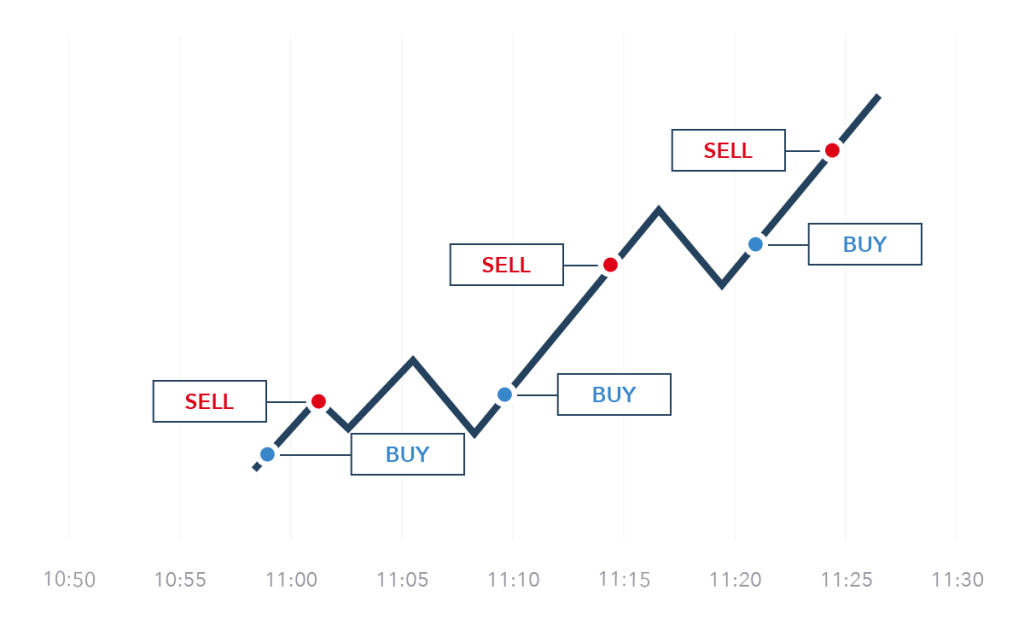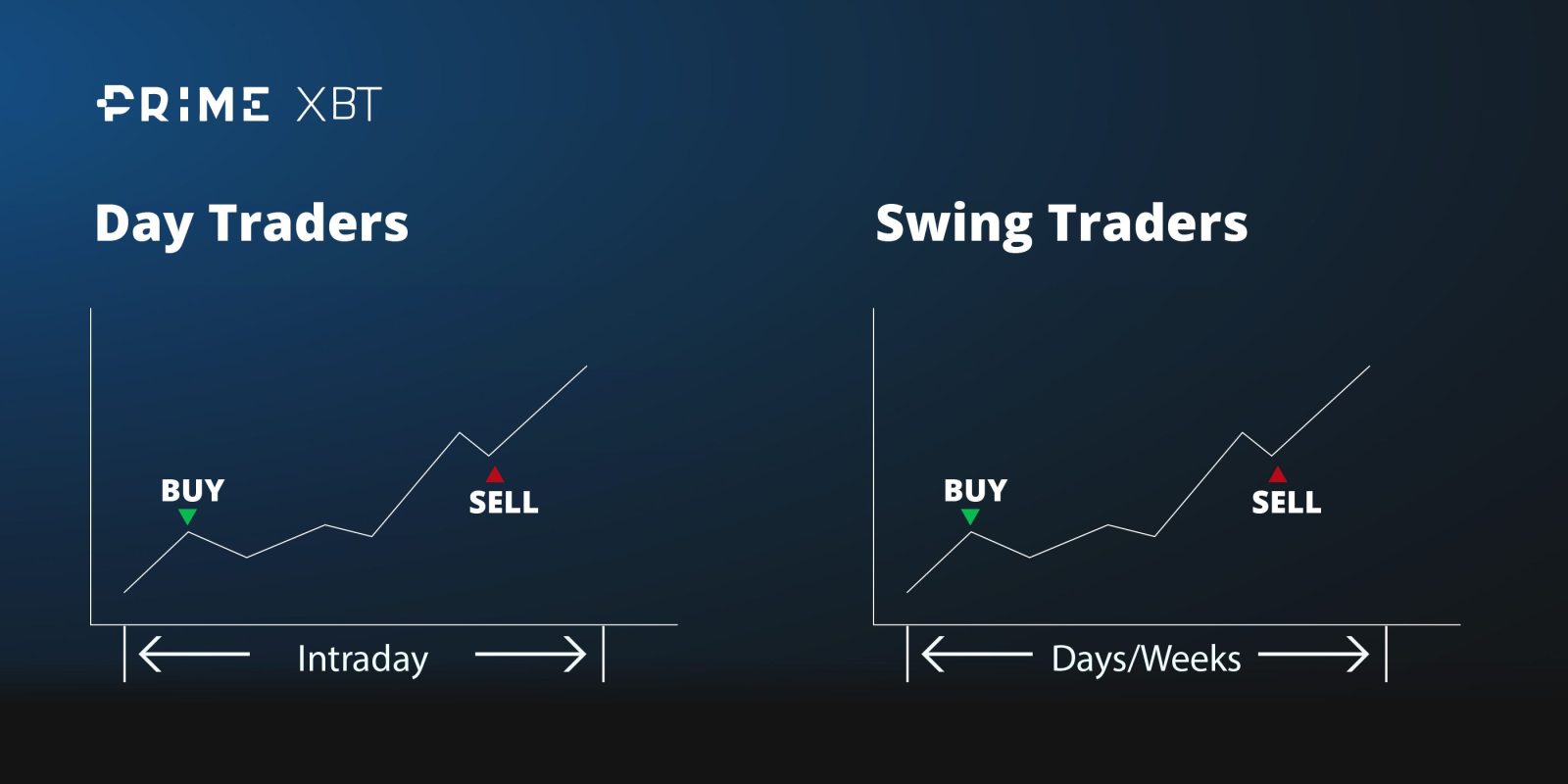In the world of active trading, swing trading and day trading are two tactics that stand out. Both strategies try to profit from short-term changes in the market, but they vary in how long and how often they trade. Traders who want to make good choices and make the most money possible need to know the details of each strategy. In this piece, we’ll look at swing trading vs day trading, including their pros, cons, and ways of analyzing the market.
All About Swing Trading (Advantages, Disadvantages)
Swing trading involves taking positions in stocks, commodities, or currencies with the intention of capturing medium-term price fluctuations. Swing traders aim to profit from the “swings” or trends that occur over a period of several days to weeks.
Advantages of Swing Trading
Greater Profit Potential: As swing trades are held for a longer duration, there is a higher potential for capturing larger price moves and generating substantial profits compared to day trading.
Reduced Stress: Swing trading allows for more relaxed decision-making as traders are not constantly monitoring the markets throughout the day. This can lead to reduced stress levels and better overall mental well-being.
Less Time-Intensive: Unlike day trading, swing trading does not require traders to constantly monitor the markets. This makes it a more suitable strategy for those with limited time availability or other commitments.

Disadvantages of Swing Trading
Overnight Risk: Holding positions overnight exposes swing traders to the risk of adverse price movements that may occur outside of regular trading hours. This can result in significant losses if the market moves against their positions.
Delayed Execution: Due to the longer holding period, swing traders may experience delays in entering or exiting trades, especially during periods of high market volatility. This can impact trade execution and potentially lead to missed opportunities or unfavorable prices.
Potentially Lower Trade Frequency: Swing trading typically involves fewer trades compared to day trading. This may result in reduced trading activity and potentially lower overall profitability, particularly in markets with limited opportunities for swing trades.
All About Day Trading (Advantages, Disadvantages)
Day trading involves making multiple trades within a single day, with the aim of profiting from intraday price movements. Day traders seek to capitalize on short-term volatility and typically close all their positions by the end of the trading day, avoiding the risks associated with overnight positions.
Advantages of Day Trading
Quick Profits: Day traders aim to capture small price movements and generate profits within a short period. By making multiple trades, they can potentially accumulate significant gains throughout the day.
Avoiding Overnight Risks: Day traders close all their positions before the end of the trading day, eliminating the risk of adverse price movements that may occur outside regular trading hours.
Increased Trade Frequency: Day trading involves frequent trades, allowing traders to take advantage of numerous opportunities presented by intraday price fluctuations. This potentially increases the overall profitability of their trading activities.

Disadvantages of Day Trading
High Stress Levels: Day trading requires constant attention and quick decision-making. Traders must closely monitor the markets, analyze price movements, and execute trades promptly. This can lead to high stress levels and increased pressure to make accurate and timely decisions.
Greater Emotion-Based Trading: The fast-paced nature of day trading can make traders more susceptible to emotional decision-making. Fear, greed, and impatience can influence trading decisions, potentially leading to impulsive trades and poor risk management.
Limited Profit Potential: Day traders typically aim for small, incremental gains on each trade. While these gains can accumulate throughout the day, the profit potential of individual trades is generally lower compared to swing trading, where larger price moves can be captured.
Key Differences in Swing Trading vs Day Trading (The Best Guide)
Swing trading and day trading differ in terms of trade duration, frequency, and the psychological demands placed on traders.
- Trade Duration
Swing trading involves holding positions for a medium-term duration, typically ranging from a few days to several weeks. This allows swing traders to capture larger price moves and potentially generate higher profits. In contrast, day trading involves making multiple trades within a single day, with all positions typically closed before the market closes. Day traders aim to profit from small intraday price fluctuations.
- Frequency of Trades
Day traders engage in frequent trading, making multiple trades throughout the day to take advantage of short-term price movements. They actively monitor the markets and execute trades promptly. In contrast, swing traders make fewer trades, as they focus on capturing medium-term trends. Swing trades require more patience and may not present as many trading opportunities as day trading.
- Psychological Demands
Day trading takes a lot of focus, the ability to make quick decisions, and the ability to deal with a lot of stress. Day traders must always keep an eye on the markets, look at how prices are changing, and make moves quickly. This fast-paced setting can be hard on your mind and heart.
Swing trading, on the other hand, is a less stressful way to trade. Traders have more time to plan their trades, look at market trends, and make choices based on what they know. Day traders might feel more stress and pressure than swing traders.
Which Strategy is Right for You?
Choosing the right trading strategy in swing trading vs day trading, depends on various factors, including your trading goals, time availability, risk tolerance, and personal preferences. Consider the following points when deciding between swing trading and day trading:
- Time Commitment: Day trading requires constant attention throughout the trading day, while swing trading allows for more flexibility and may be suitable for those with limited time availability.
- Risk Tolerance: Day trading involves higher levels of risk due to the fast-paced nature and potential for significant intraday price fluctuations. Swing trading carries overnight risk but may be less volatile overall.
- Psychological Factors: Assess your ability to handle stress, make quick decisions, and manage emotions. Day trading requires a high level of mental discipline, while swing trading offers a more relaxed trading experience.
- Profit Potential: Consider your profit goals and assess which strategy aligns with your expectations. Day trading offers the potential for quick profits, while swing trading allows for capturing larger price moves.
It’s important to note that both swing trading and day trading require a solid understanding of technical analysis, risk management, and trading discipline. Developing a trading plan, sticking to it, and continuously honing your skills are key to success in either strategy.
Final Thoughts
Swing trading and day trading are two different ways to trade that are good for traders with different styles and tastes. When comparing swing trading vs day trading, you should think about your trading goals, how much time you have, how comfortable you are with risk, and how you feel about trade. Make sure you have a good trading plan, follow strict risk management rules, and keep learning to improve your trade skills.












